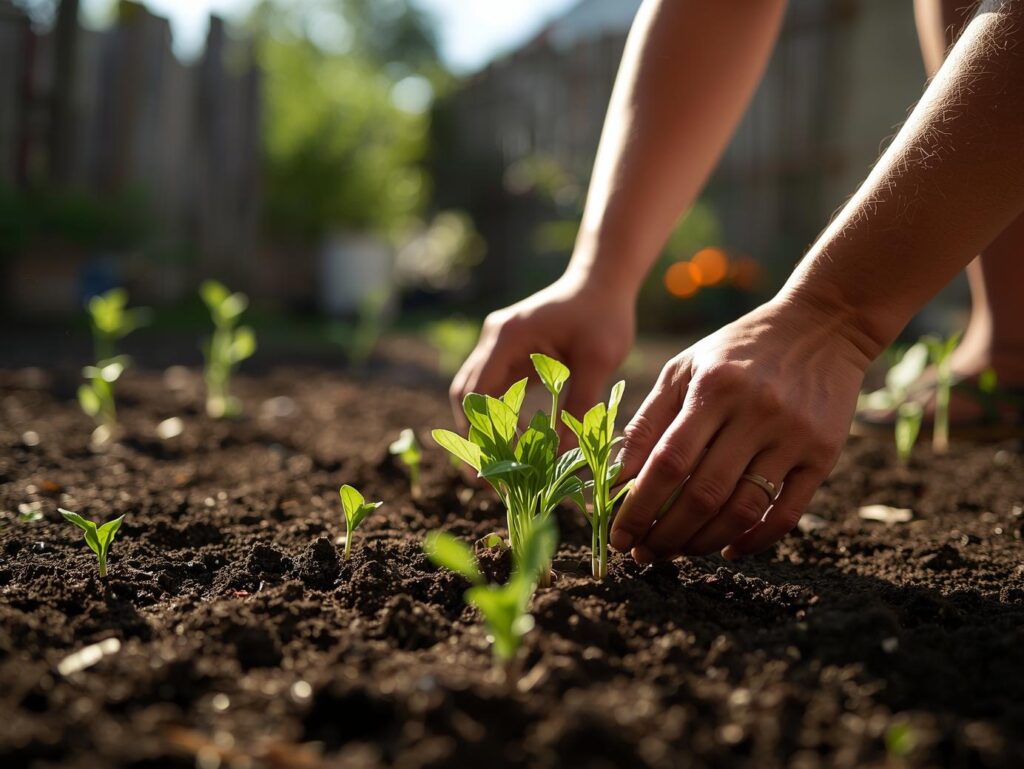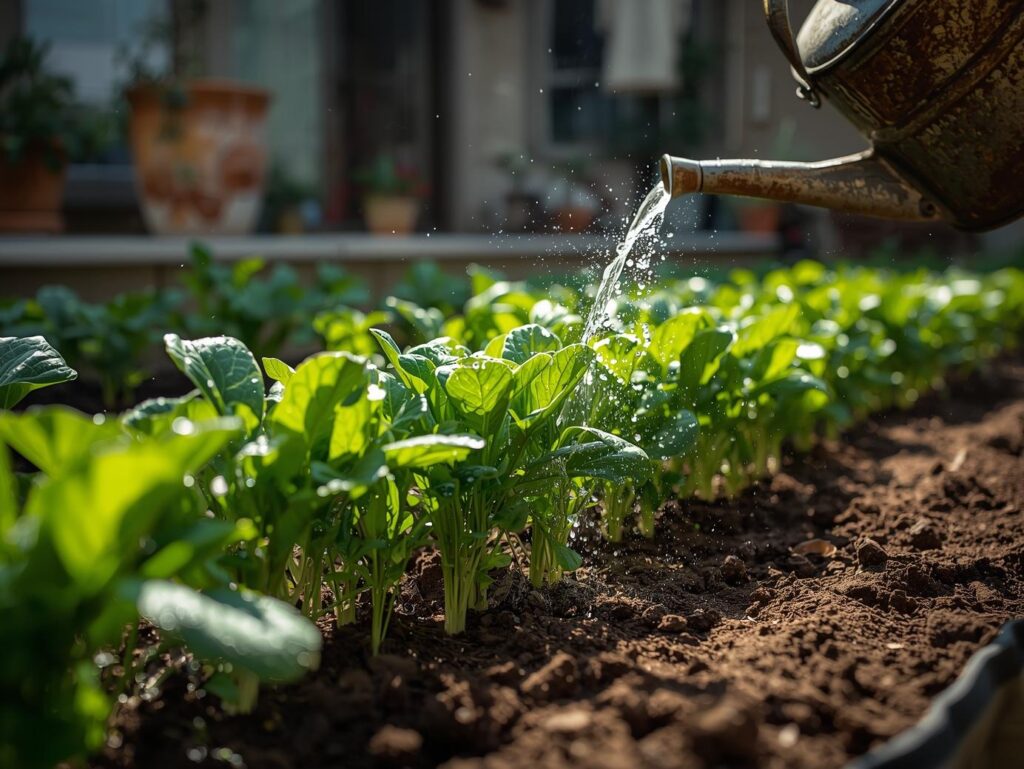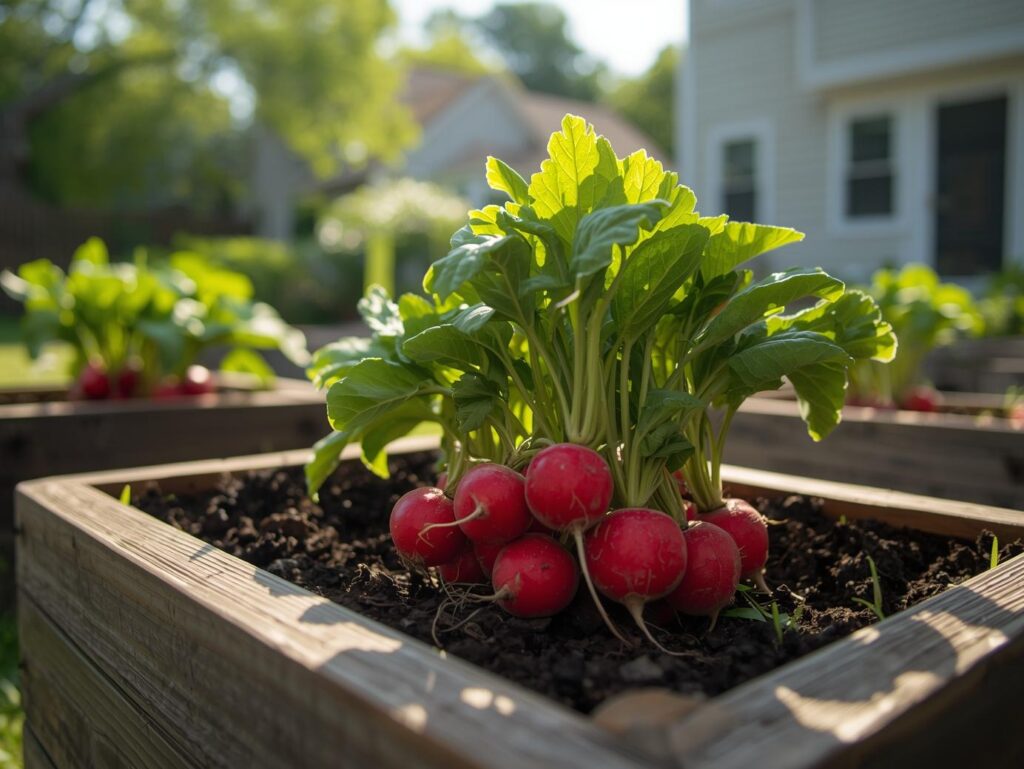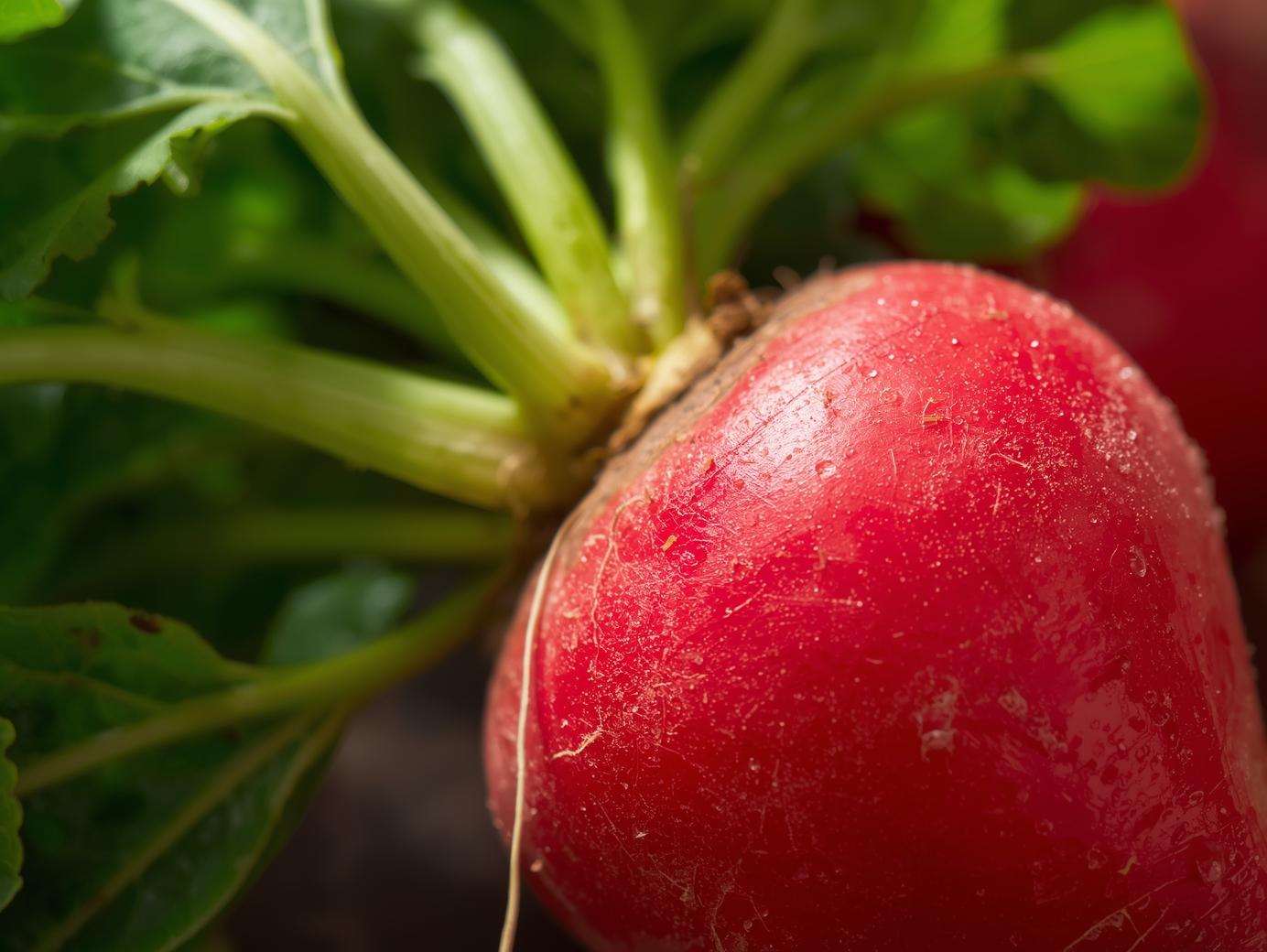Site Preparation
Preparing the planting site is one of the most important steps when growing radishes in your home courtyard. These fast-growing root vegetables need full sunlight for at least six hours a day, although they can tolerate partial shade. Choose a spot in your courtyard that receives consistent sunlight and has good air circulation. Clear away any weeds, stones, and debris to create a smooth, open surface for planting. Since radishes mature quickly, proper site preparation ensures they have the best start possible.
Loosen the top 8 to 10 inches of soil using a garden fork or hand tiller to make it easier for roots to grow straight and uniform. Mixing organic compost into the soil improves its structure and adds nutrients that radishes can easily absorb. Raised beds or large containers can also work well in courtyards, especially in urban areas where space is limited. Preparing the site correctly creates a fertile and loose environment that promotes rapid root development and healthy growth.
Soil Selection
Radishes grow best in loose, well-drained, sandy loam soil with a pH between 6.0 and 7.0. Heavy clay soils can restrict root expansion, causing misshapen or stunted radishes. To improve heavy soil, add compost, peat moss, or sand to enhance aeration and drainage. The goal is to provide a light and crumbly soil structure that allows roots to develop easily without resistance.
For courtyard gardens in the USA, raised beds and deep containers filled with nutrient-rich potting soil are ideal for growing radishes. Regularly adding organic matter such as composted leaves or manure helps maintain fertility and moisture balance. Conducting a soil test before planting ensures proper pH levels and nutrient balance. Healthy, well-prepared soil guarantees smooth, crisp, and flavorful radishes that grow quickly and evenly.
Planting
Radishes are one of the easiest vegetables to grow from seed and are perfect for home courtyards. In most U.S. regions, you can plant radish seeds directly into the soil as soon as the danger of frost has passed. For a continuous harvest, sow seeds every two weeks from early spring through early fall. Plant seeds about half an inch deep and one inch apart in rows spaced 8 to 10 inches apart. Radishes germinate quickly, often within three to five days under ideal conditions.

Once seedlings appear, thin them to about two inches apart to give each root enough space to grow properly. Crowded plants can lead to small or misshapen roots. In smaller courtyards, you can grow radishes in containers or along the borders of raised beds since they don’t require much space. Proper planting ensures uniform root growth and a steady supply of fresh radishes throughout the growing season.
Watering
Consistent watering is essential for growing crisp and tender radishes. The soil should be kept evenly moist but never soggy. Irregular watering can cause the roots to split or develop a strong, woody texture. Water the plants deeply once or twice a week, depending on weather conditions, ensuring that moisture reaches the root zone. In warmer U.S. climates, more frequent watering may be necessary to keep the soil from drying out.

Adding a layer of mulch around the plants helps retain soil moisture, suppress weeds, and maintain even temperatures. Always water early in the morning so that any excess moisture on leaves dries by evening, reducing the risk of disease. Consistent moisture is key to achieving the crisp texture and mild flavor that make homegrown radishes a garden favorite. Proper water management ensures that your plants remain vibrant and productive until harvest.
Fertilizing
Radishes grow quickly and typically do not require heavy fertilization, but balanced nutrition supports healthy growth. Before planting, mix compost or a well-balanced organic fertilizer into the soil. Too much nitrogen encourages lush leaf growth but small, underdeveloped roots, so use a fertilizer with more phosphorus and potassium for root development. Once the seedlings are established, light feeding every two to three weeks is sufficient for sustained growth.
For organic gardeners, compost tea or seaweed extract can be used to boost nutrient levels naturally. These fertilizers strengthen root formation and improve flavor without harming the soil ecosystem. Avoid over-fertilizing, as excessive nutrients can affect the quality and taste of the radishes. Maintaining a moderate feeding schedule ensures healthy, well-formed roots that are perfect for fresh salads and home meals.
Pruning and Training
Radishes require very little pruning or training because they are compact and fast-maturing plants. However, removing damaged or yellowing leaves helps improve air circulation and prevents pest or disease buildup. Regularly checking for overcrowding and thinning young plants ensures better root growth and avoids competition for nutrients and sunlight.
In courtyard gardens, especially when growing multiple crops, keeping the radish bed tidy helps maintain an organized and visually appealing space. Removing weeds early also prevents them from stealing moisture and nutrients. While radishes don’t need support structures or trellises, maintaining an open and well-spaced layout encourages healthy growth and faster maturity.
Pest and Disease Control
Radishes are relatively hardy but can still be affected by pests like aphids, flea beetles, and root maggots. Regular inspection of leaves and roots helps detect problems early. Spraying plants with a mild neem oil solution or insecticidal soap can control most pests without harming beneficial insects. Covering the plants with lightweight row covers also prevents pests from laying eggs on leaves or roots.
Diseases such as downy mildew, clubroot, or damping-off can occur in poorly drained soil or overcrowded conditions. To prevent these issues, ensure good air circulation, rotate crops annually, and avoid overwatering. Removing affected plants immediately helps prevent the spread of infection. By maintaining a clean, well-managed garden, you can enjoy a continuous, healthy radish crop in your home courtyard.
Fruiting and Harvest
Radishes mature quickly, often within three to four weeks after planting, depending on the variety. The roots are ready to harvest when they reach about one inch in diameter. Gently pull them from the soil while they are still firm and smooth, as leaving them too long can cause them to become pithy or overly spicy. Harvesting regularly also encourages continued growth and ensures a steady supply of fresh radishes.

After harvesting, remove the leaves to prevent moisture loss from the roots. Rinse the radishes thoroughly and store them in the refrigerator to maintain freshness. In many U.S. regions, radishes can be grown in both spring and fall, providing multiple harvests each year. With timely harvesting and proper care, your courtyard garden can produce crisp, flavorful radishes perfect for salads, garnishes, and everyday meals.
